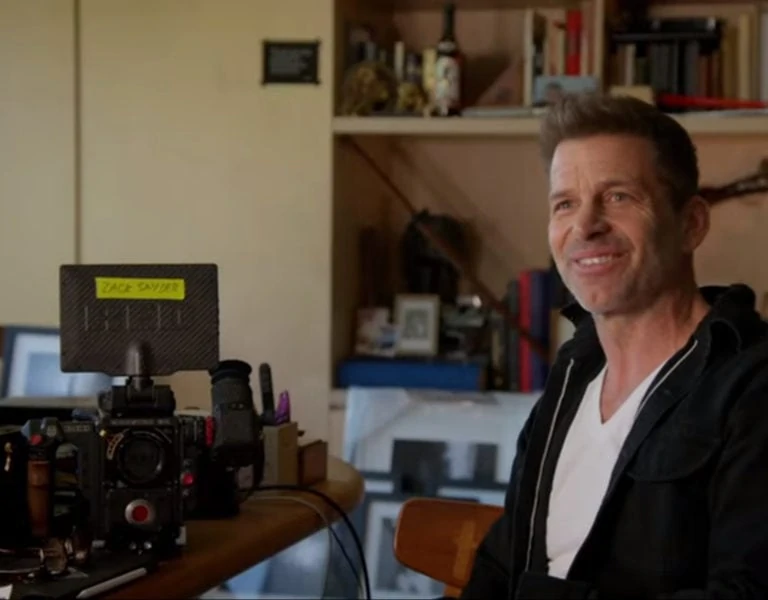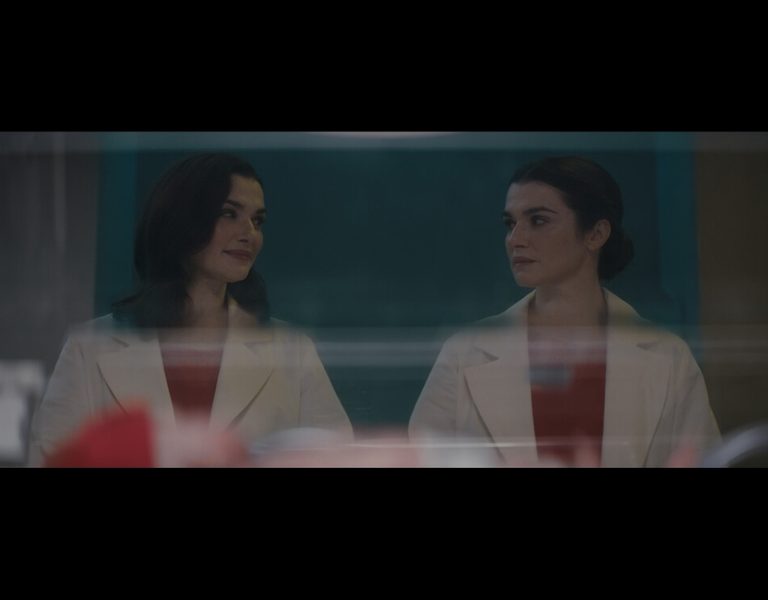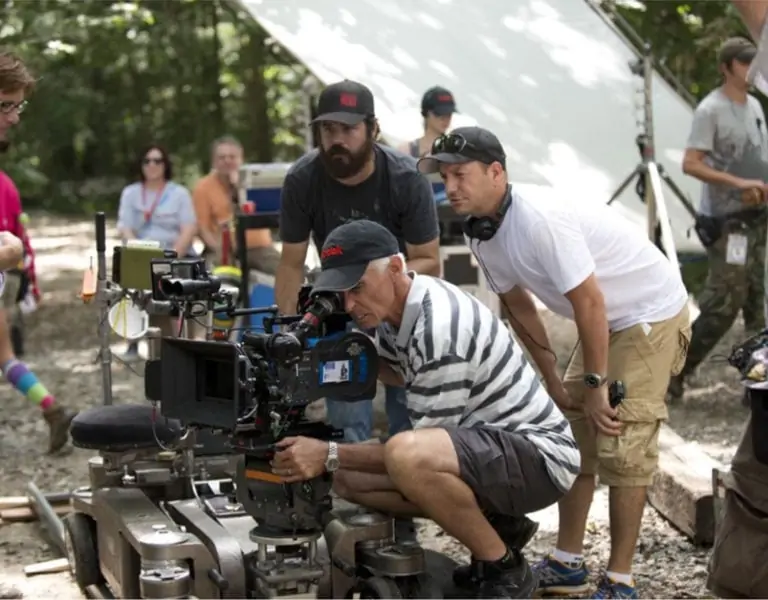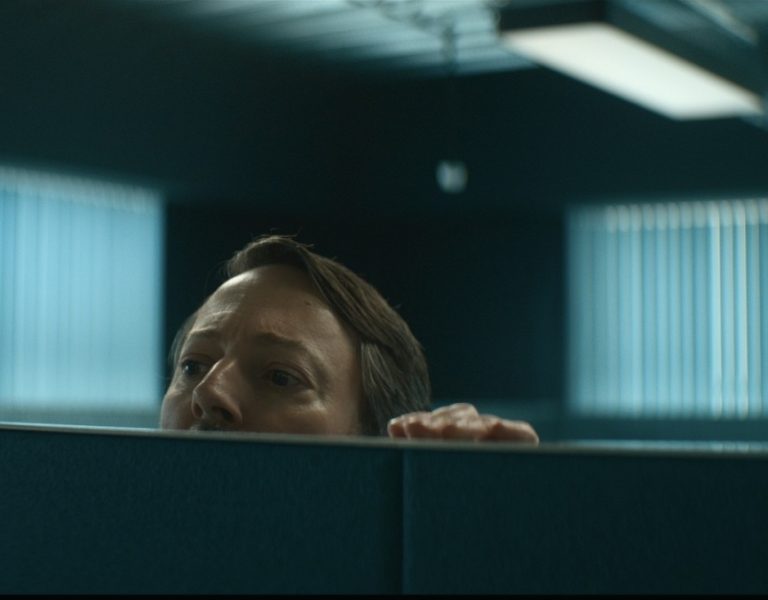MISSION: IMPECCABLE
It’s the most daring cinematic adventure in the Mission: Impossible franchise’s 27-year history, packed with adrenaline-fuelled stunts and a powerful visual approach to match. Cinematographer Fraser Taggart reveals how the latest instalment was lensed to immerse the audience in the action.
Renowned for phenomenal stunts and gripping action, Mission: Impossible’s seventh chapter again sees Tom Cruise commit to tackling new challenges as he resumes the role of field agent and operative Ethan Hunt. But for the first time in Mission history, the action-packed story is split over two movies.
“It’s something we’ve never attempted before because of the complexity of these stories,” says Cruise. “The scale of these two movies is epic in every sense.”

Fraser Taggart, the cinematographer behind Paramount Pictures’ Mission: Impossible – Dead Reckoning Part One, sees the films as a standalone entity created through a unique process beginning with a script that is open to change. “I wondered how to make part one work as a complete story everyone’s satisfied with while leaving it open for a conclusion in the eighth film,” he says. “But McQ [writer/director Christopher McQuarrie] is masterful with words and when he talked me through the script, I could see it working.”
Until McQuarrie finds suitable locations, plans for the narrative are not set in stone. “If he falls in love with the place when we scout, he’ll rewrite the story over the next couple of days,” says Taggart. “It can cut your prep time and you need to be prepared for all possibilities, but I enjoy it because it becomes an interesting puzzle. Sometimes you can plan things too much and get locked into that idea in your head.”
Shooting in new and exciting ways to immerse the audience would also give the film the edge, highlights Taggart, who enjoys making the audience feel they are involved in a scene rather than an observer. “I want them to be in with the action and feel the energy. Viewers want to be a character in the film and experience what they are experiencing, so we shot anamorphic for a wider field of view and rarely relied on detached longer lenses.”

An original vision
Wanting to avoid comparisons between his films and others, Taggart endeavours to create a different feel throughout. When he discovered the possible locations in which the latest film would play out, he set out to give each a distinct look. “There were great opportunities on Mission 7 – the desert, Venice at night, Rome – and I tried to keep each away from being too theatrical. I wanted to break it into sections – giving the safe house a moodier look and the submarine sequences a period feel. As every DP wants to do a Lawrence of Arabia in their own way there was also great satisfaction in the scenes captured in Abu Dhabi that allowed us to explore the natural desert look.”
The Abu Dhabi location, filmed over 12 days in the desert area of Liwa, provided undulating dunes and a salt plain flat, upon which production designer Gary Freeman and his team built an abandoned mining town in just five weeks. Other elements built from scratch and designed by Freeman, who Taggart has known for many years, included the interior of the Russian nuclear submarine in the opening sequence.
Taggart applauds Freeman’s sub design which resulted in “the highest quality set built at Longcross Studios in Surrey that was an accurate representation of a sub of that period. You also want to create some imperfection through the set and lighting to make it feel real and gritty rather than arty. The train was also built from scratch, and I kept going into the workshop to marvel at it. It gets even more incredible in the next film – what they built at Longcross is completely crackers!”
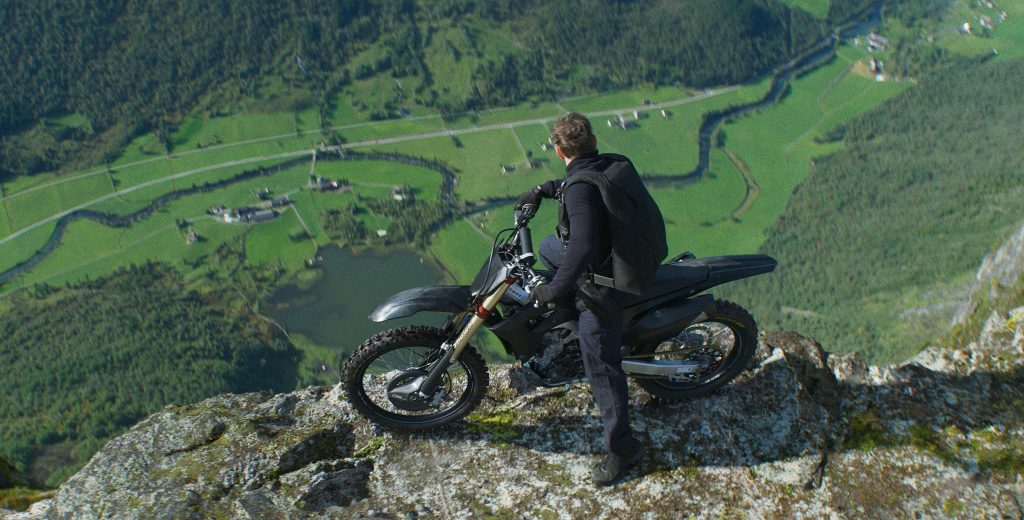
While few references guided the look of the film, they influenced its structure, with the train sequence in Buster Keaton’s The General (1926) and car chase in Don’t Look Now (1973) among those that informed their approach.
Working closely with McQuarrie, Taggart set a basic look and several additional controllable looks for each scene. For stage work shot at Warner Bros. Studios Leavesden Taggart, McQuarrie, gaffer Martin Smith, and A camera/Steadicam operator Jonathan ‘Chunky’ Richmond then selected their favourite look and tweaked it to suit the action.
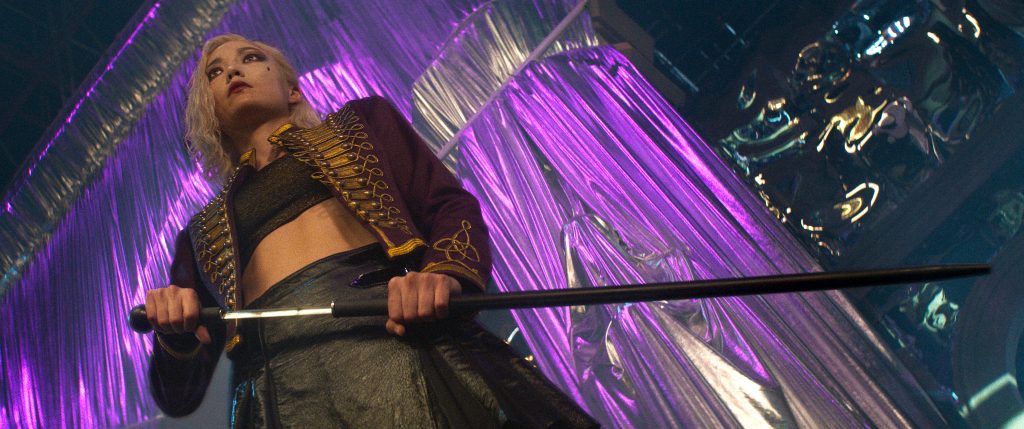
Despite technology making it possible to visualise if and how a scene will work, Taggart often prefers working with a more simplistic storyboard. “Pre vis can be a good guide, but you can also get too locked into it,” he says. “I would rather have a guideline picture that gives you every 10 seconds in a scene and let it happen naturally when you physically get there. Even if you see where a camera could go and move, when you’re physically in a set the director may decide the actor should be somewhere else or see a better way to shoot.”
Some pre vis was used for the bigger moments in a sequence which sees Cruise fighting on top of a moving train, before battling zero gravity inside it, trying to escape each carriage before the train plummets off a bridge. The technology helped establish how to technically achieve what was needed on the moving train using cranes and whether it would be possible to get a flatbed carriage with a 50-foot arm over the other train carriage.

Rising to the challenge
Although COVID restrictions impacted the film, the crew managed to shoot much of the way through the pandemic, with the thorough precautions they took used as guidelines for many other productions. Shooting began in Norway with a daring motorcycle parachute stunt before production moved to Yorkshire to shoot more jaw-dropping and ambitious sequences on the train. The crew then headed to the UK to prep and shoot sequences such as interior train scenes in the studio before traveling to Venice which then became the epicentre of the pandemic.
“We got to Venice, prepped and then COVID really hit, and we had to evacuate to Rome. But when the situation got worse, we returned to the UK where, even though there was a hiatus, we could continue prep discussions,” says Taggart.
When it was safe to return to Venice, the cinematographer was concerned about shooting in the city as “despite being stunning, it’s a difficult place to shoot, and when we started putting lighting in it looked like a theatre set due to the architecture and all the water.”
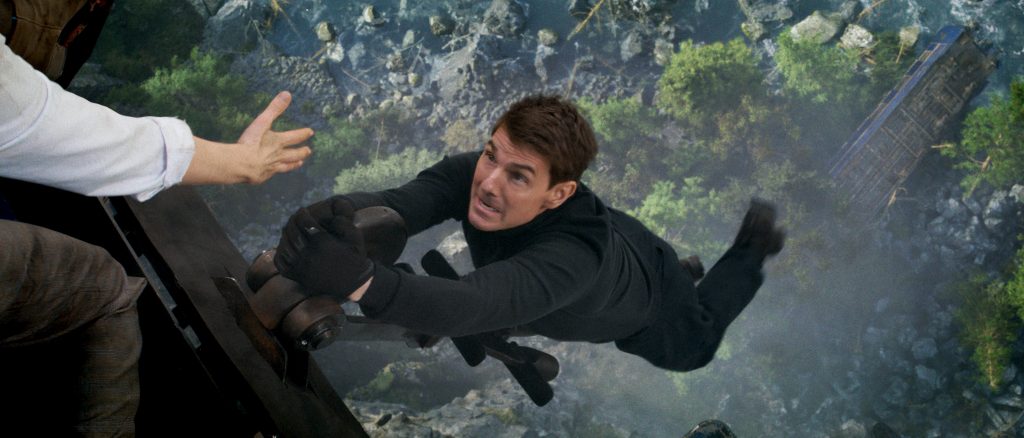
While the Rome sequences were shot in broad daylight, all the action in Venice was filmed at night, starting at a midnight gala at the landmark Doge’s Palace. “But we wanted to shoot it in a way that had never been done before,” says McQuarrie. “So, we made it about light and colour, bringing in digital projectors that made the palace a character itself. Rather than just be a solid structure, we wanted the building to feel alive.”
The director commends gaffer Smith, and Taggart for achieving “an extraordinary world we could move very fluidly through,” bathed in dazzling reds and blues from the bell tower of St. Mark’s Basilica.
The crew soon realised few productions feature nighttime scenes shot in Venice. “There were some in The Tourist along the Grand Canal where a barge with a big light source can create moonlight,” adds Taggart. “But McQ and Tom liked little back canals where it wasn’t possible to rig big lights. Our Italian team knocked on every door asking if we could use balconies, windows or roof terraces and did an amazing job sourcing places to light from.”

With the area still in lockdown and residents on curfews, working in Venice during the pandemic was an unusual experience for the crew who were able to shoot thanks to Cruise’s focus on rebuilding a production plan for how they could get the film made and developing the gold standard of pandemic protocols.
As the city is so walkable, the camera and electrical department would often explore by foot or sometimes by service boat. “It’s sad to say, but because of COVID you saw the city like no one really has,” says Taggart. “Travelling along the little canals with my gaffer Martin at dawn when nobody was there was a beautiful experience.”
While some crew changed as the production moved around the globe, the camera department and core electrical team including dimmer operators, best boys and rigging team remained the same, enhanced with local techs at each stop.
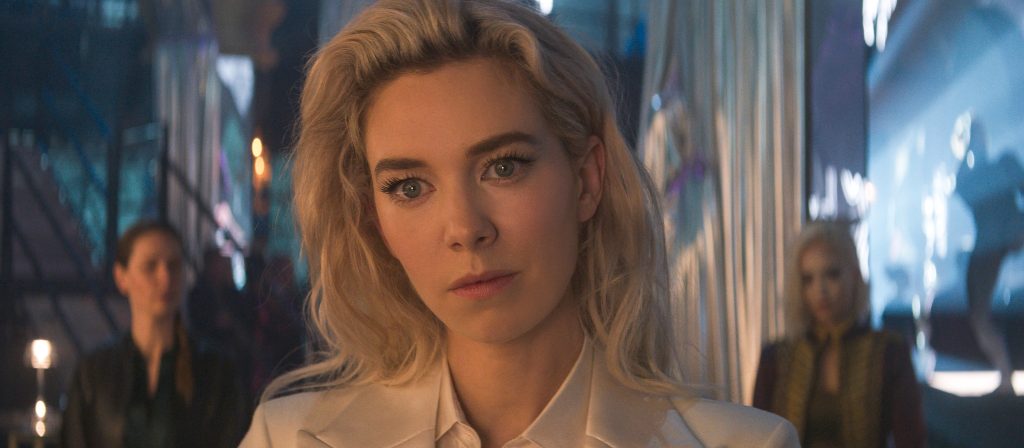
A digital adventure
Dead Reckoning – Part One is the first film in the franchise to be captured completely digitally. Although there was a desire to shoot on film, the experiences when making previous Mission productions informed them it would not be practical. When Taggart was additional director of photography on Mission: Impossible – Fallout – which was shot on film and digital – it had not been possible to position cameras where they needed for a helicopter sequence when shooting on film. “We were going to be in the air for 10 minutes and would never have got a 1,000-foot roll on as that would give us a maximum of four minutes of flying, so we needed to shoot digital,” he says.
During prep for Dead Reckoning – Part One the team still discussed how they might make shooting on film work. “But as more ideas were formed, they cancelled out film,” adds Taggart. “There’s fighting on the roof of a train going 60 miles an hour and the operators would only be able to manage the smallest possible cameras which give us two minutes of shooting time on a 200-foot mag. We couldn’t stop the train and break up the action every time to reload, so for practicality we needed to go digital which is also an amazing option now.”
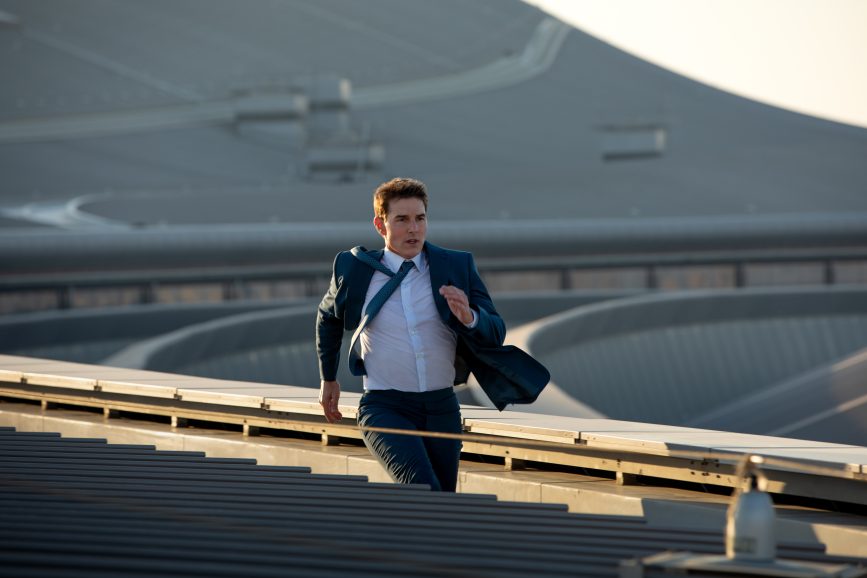
To create a look that resembled shooting on film tests were carried out including shooting on old anamorphic glass to soften the end result. Working with the Sony Venice – a camera Taggart had not used before – also helped create a film-like look due to its “more forgiving sensor.”
Grain and emulsion effects were experimented with at De Lane Lea so the crew knew they could achieve the right look. Digital capture was then confirmed as the right choice when it opened the options up to shoot a car chase in Rome in which Cruise and Hayley Atwell (as professional thief Grace) are pursued in a BMW before they transfer to a tiny vintage Fiat 500.
“I got to grips with putting a full Venice and longer anamorphic lenses on the BMW car using a hostess tray car rig to attach it looking profile to the passenger and driver,” says Taggart. “Even though it would be ridiculous to put it on the tiny Fiat, I wanted to show Tom and McQ what would happen. When they saw the Fiat leaning over on its side with the camera attached, we had a laugh about it and realised that would not work.”

Through prep and testing Taggart realised the full-frame Z Cam E2-F6 would be best to capture such action. “It creates a similar look to the Venice, and we paired it with small spherical Zeiss CP.3 lenses. It made it more interesting because the Fiat became a character,” he says. “We couldn’t rig out too far because it was impractical in the alleys but that became a look we loved as we were part of the action and in close and personal in the car with Tom and Hayley using wide lenses.”
Taggart wanted life in the camera throughout the film, “but not a handheld thrashy feel”, which drew him to opt for a lot of Steadicam, some crane work, and a little dolly. “But one of our main tools was the Stabileye – a genius mini gyro head used by one of our grips Ross Shepherd who we talked through the shot via headset. He really knows where the lens has to be.”
The amount of action that plays out in the train restricted how the crew could shoot. While Steadicam was sometimes suitable, many sequences were captured handheld to make it possible to use the width of the train, occasionally shooting with an ARRI Alexa Mini LF.
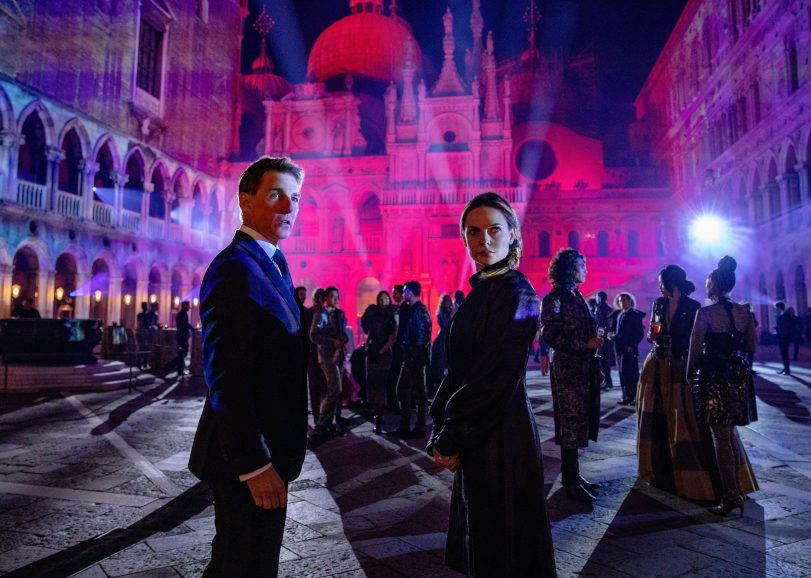
The Venice’s Rialto mode made it possible to get in amongst the action during a fight between Cruise and Pom Klementieff (Paris) in an alleyway. “Rialto was great for some scenes but not all because when you shoot handheld it’s normally on your shoulder or down low and the weight of the camera removes any twitchiness. So, we had our main core set-up of Steadicam – usually two – and a Rialto rig as a handheld and Stabileye Rialto rig ready.”
Other rigs deployed included a Libra gyroscopic head created by Camera Revolution which Taggart had wanted to use for some time. Having shot many action films, the cinematographer had been batting ideas back and forth with Camera Revolution owner Ian Speed to try to build gear to help realise his vision.
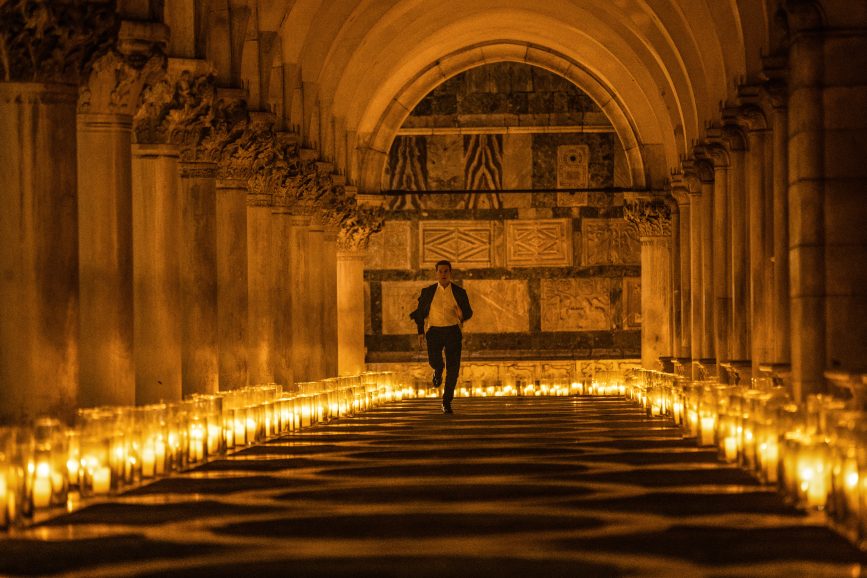
“They showed me a robotic arm that fits on the vehicle you’re shooting which I tested and loved, but you can never get an actor who can drive and always have a pod driver which wouldn’t work for our sequences,” says Taggart. “However, as Tom does everything, including driving, we could bring that robotic arm in for the car chase scenes in Rome with the Z Cam and create a look that hadn’t been seen before.”
To film Cruise running the crew wanted to use an electric motorbike, but as the scene would be shot at night it was felt this might disturb local residents. Instead, an electric push bike with a Stabileye attached to it was ridden by motorcycle expert Kieran Clarke. “Venice streets are quite cobbly, but we liked to get a bit of energy into the shot, so it worked fine,” adds Taggart. “We also used low level drones to track and profile.”

Softening the image
To fulfil Taggart’s aim of softening the image when shooting digital he chose Panavision C, D and E Series as the main lens package. “We wanted the oldest glass possible that still offers quality, so we mainly used the C Series anamorphic lenses for their softness to create a more film-like look, with D and E lenses used on occasions.”
Starting with 75mm anamorphic as his close-up lenses, Taggart then felt lucky to acquire a 60mm when it was freed up from another production as old glass anamorphics are “so precious because they were made through a lead process which has now stopped.”
For scenes shot in Venice, Taggart tested 65mm because “it flattens the lens off a little when shooting large format. But then you get into depth of field problems, and we couldn’t get enough light.” So, he went to Venice with a package of 35mm anamorphic, Alexa 65 with full frame lenses, and the Venice camera with anamorphic lenses to shoot three night tests in different parts of the city to decide on the right formats and lightweight bodies for each location.
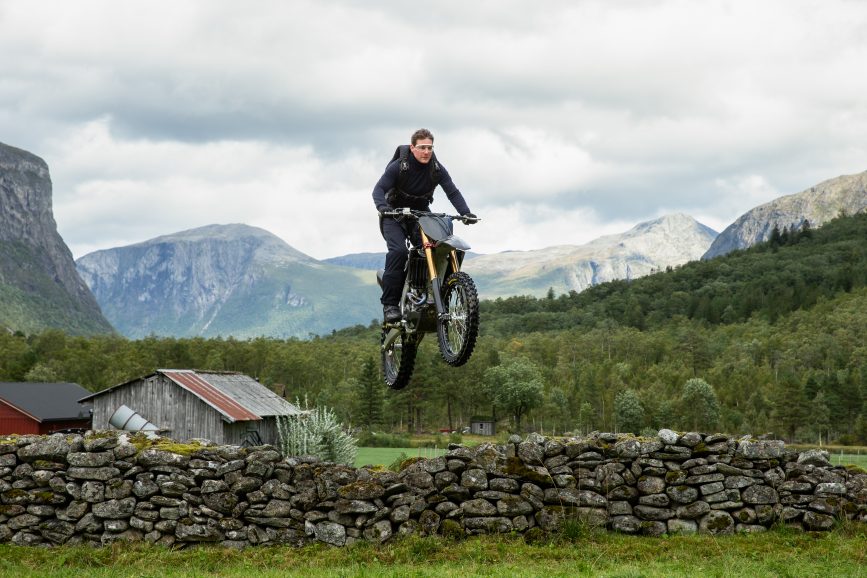
Shooting high-flying and high-speed action demands the cameras and lenses are light and on occasions testing led the team to use lenses designed for stills which needed to be suitable for cine use and easily pull focus. “Stills lenses are not calibrated in the same way or gridded to be focused at certain lengths,” he highlights. “But they’re light weight enough for some motorbike and car rigs and the small Zeiss CP.3 lenses worked perfectly for such situations.”
Shooting some sequences for IMAX demanded the crew adapt their technical process. “You have to shoot on cleaner glass because you normally go spherical for IMAX to achieve the aspect ratio as you’re limited with anamorphic and can’t extend in 4K quality,” he says. “We shot a fair bit of the train scenes spherical because there were no CG backgrounds to consider so when at a later stage it was decided the train should be IMAX luckily we were covered.”
The cinematographer has been testing shooting anamorphic and going in on the sensor a little to give the coverage needed for IMAX. “It can be problematic when a scene lends itself to wide lenses, so with Mission 8 – which will be more IMAX heavy – we’re experimenting with making the wide lenses tighter and doing proof of concept on spherical and anamorphic lenses, and different cameras.”

Soaring shots
Famously known for doing his own stunts, Cruise’s fearlessness adds another level of wow factor to the production. “Even when we filmed daring helicopter sequences in New Zealand for Fallout it had to be Tom in all shots, even his hands on the aircraft controls,” says Taggart.
Second unit director, stunt coordinator and stuntman Wade Eastwood (Edge of Tomorrow, Mission: Impossible – Fallout) and his team prepare extensively for all stunts. On the training regimens and rigorous safety protocols that surround every element of the production, Cruise highlights a phrase he and the Mission: Impossible team have coined: ‘Don’t be safe. Be competent.’
This time around, Cruise attempted his most ambitious stunt yet – driving a custom-made Honda CRF 250 off a purpose-built ramp on the side of Norway’s Helsetkopen mountain, a rock face sat 1,200 metres above sea level. He then plunged 4,000 feet into the ravine below before opening his parachute barely 500 feet from the ground.

After rehearsing for a year in the UK during pre-production, by the time the cameras rolled Cruise had completed over 500 skydives and 13,000 motocross jumps to prepare. “We built a test ramp in Oxfordshire and monitored Tom’s trajectory as he left the bike and the different wind conditions,” says Taggart. “But when you get there on the day it’s a different place due to varying updraft.”
On the first take of the stunt, the conditions was perfect, and Cruise soared through a layer of misty cloud, adding to the wonder of the scene. He then insisted on doing the jump another seven times to make sure the footage was perfect. “You go, ‘Well, we got it. Why would you want to carry on?’ But he loves doing it – he’s just an adrenaline freak which I admire,” adds Taggart.
Aerials are an effective way to introduce the audience to new environments and offer new perspectives. The chemistry between camera pilot Will Banks and aerial DP Phil Arntz – co-directors of the Aerial Film Company – played a part in achieving such ambitious scenes. As well as the bike jump, key sequences the aerial team captured were the train scene in Norway, the train crash in the Peak District, and some air-to-air elements with the United States Marine Corps shot in Abu Dhabi. They mostly utilised helicopters in combination with a Shotover K1 and a Turbo Prop airplane with a Shotover F1 for high-speed work in Abu Dhabi.
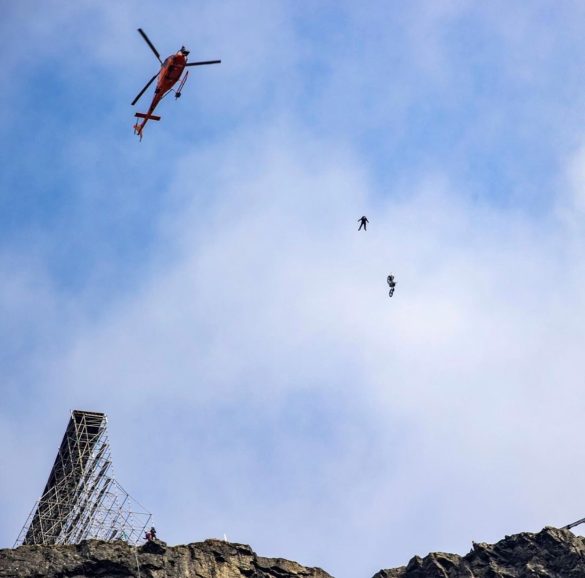
“If the pilot isn’t getting the camera where it needs to go at precisely the right time, the shot won’t work,” says Arntz. “Will is a fantastic collaborator in that he will push the envelope and get us into the midst of the action whilst maintaining the safety margin to make sure we operate within the limits of aircraft, location and permissions.”
Early conversations between Arntz, McQuarrie, Cruise and Taggart revolved around creating longer takes for key stunt sequences such as the bike jump. “When you create cinema on such a huge scale with a focus on the action being real, you want to make sure you develop a way of capturing it in a believable way for the audience,” says Arntz. “As the aerial director of photography, I wanted to become a reliable part of McQ, Tom and Fraser’s toolkit – offering up creative angles in difficult places. Understanding the visual language and intentions of the team early on meant we could offer new perspectives, quickly and efficiently time and time again.”
If there’s anyone who truly understands how to put an action sequence together, it’s Taggart, Arntz continues: “He has such vast experience not only as a second unit DP, but as an aerial cinematographer, so he really understands the intricacies of the job.”

The bike jump presented a challenge for aerial team as McQuarrie and Cruise wanted to capture the stunt from the helicopter in an uninterrupted take. “Upon seeing the location and looking at the angles that were rehearsed in the UK, the decision was made to set up a one shot from the helicopter camera. When you go to such great lengths to train and prepare for a stunt like Tom did, how you present it to the audience to show them this is truly all done in camera is the next challenge,” says Arntz.
“Cutting a stunt like this into multiple pieces can hide a lot of trickery, so establishing Tom in a close-up and then introducing the audience to the sheer scale of the mountain in a single, uninterrupted take shows that this is all 100% real. Technically, this involved starting at the tight end of the Angénieux Optimo 12x and hiding a zoom to the widest part of the lens in the shot without making it feel jarring. Doing it without any prior rehearsal only complicated this more.”
Even though Taggart also finds drones to be useful for some sequences, he believes “the weight of a helicopter and the rig can result in more cinematographic results,” creating a smoother and more majestic feeling as Cruise descends over the edge of the mountain.

After being filmed on a long lens the shot opens up into the big reveal captured by drones shooting in the opposite direction. “You’ve got to see it’s Tom because he does everything for real, otherwise there’s no point, so drones were great for that view,” says Taggart.
For the freefall sequence the risk of putting mechanical kit under the canopy of the parachute dictated the decision to use drones to track Cruise along with longer lens helicopter shots. To mix up the cut a crane was also used over the edge to capture another angle along with two land-based cameras on long lenses following Cruise once he had exited the ramp.

As it was difficult and dangerous to get close once the parachute opened, the crew tried using GPS tracking and attaching a sensor to Cruise to prevent the drones getting too close. “But that still wasn’t perfect,” says Taggart. “One of our earliest ideas was to rig another parachutist with two Z Cams on Ronin heads that we could operate and track from a helicopter at a safe distance.”
While not used for the bike jump, the technique was deployed to practically capture the speed flying (a hybrid sport combining elements of paragliding and parachuting) stunt sequence at the end of the film shot in the Lake District. As it was not possible to get a drone or helicopter close to the action, the bespoke gimbal system allowed the audience to fly along with Cruise and experience the same kind of movement rather than feeling detached on a long lens.
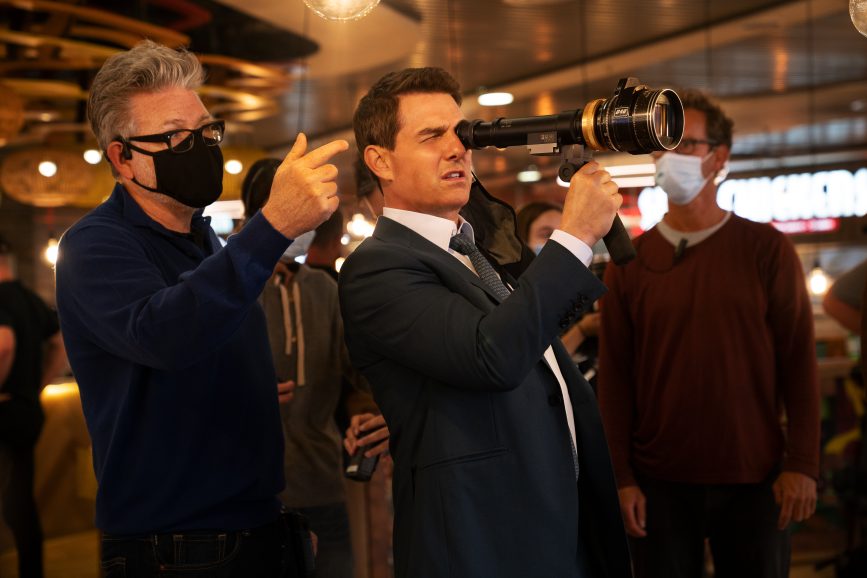
On track for success
Ambitions were high from the first day of shooting when the team tackled one of the film’s most thrilling scenes as Cruise runs along the top of a speeding train and battles enemy Gabriel, played by Esai Morales. Having received permission to close an active railway line in Norway, the crew assessed how best to shoot the sequence while making the audience feel like they were part of the action.
They worked with a remote crane on a flatbed to capture the shots and telescopic cranes to shoot wider and slightly to the side of the train. “But it could remove some of the energy from the action, so we mainly shot handheld with two operators on the roof with the cast, McQ and the stunt safety team,” says Taggart. “With around 12 people on the top of a train doing 60km an hour through a mountain track, it all needed to be precisely calculated.”
When the actors ran along the rooftop, the cameras were at 30 degrees on hydraulic rigs, with camera grip Ross Sheppard also safety wired and sprinting as fast as possible. Some footage shot from a robotic crane arm on top of a tracking vehicle offered a wider view of the action within the landscape in addition to aerial footage captured from a helicopter.
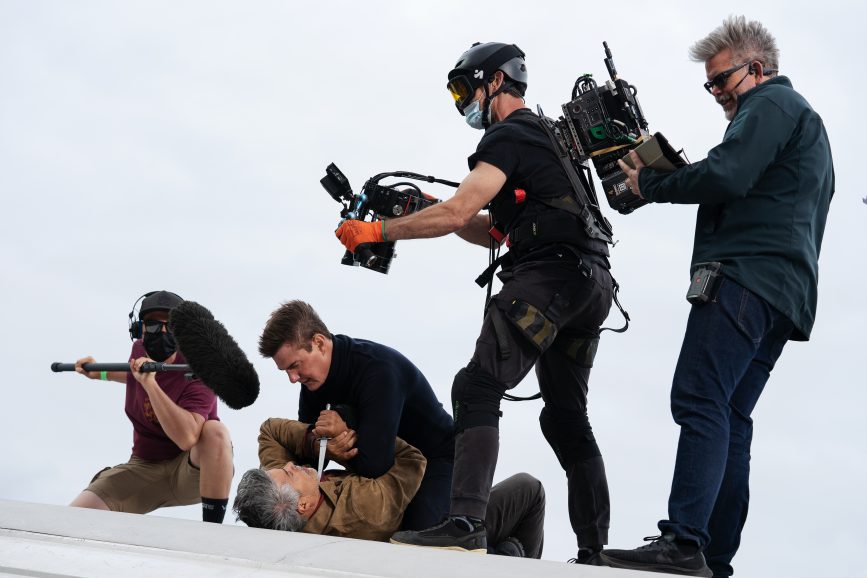
The aerial unit also used a helicopter to establish the train in the beautiful scenery and then to introduce high speed energy with countering shots, buzzing low across the roof of the train to convey a sense of speed and peril.
When working with a tool like a helicopter combined with a big focal range, it can be easy to fall into an almost observatory place, because you can capture the entire action from start to finish, says aerial DP Arntz. “It’s important to understand how the aerial shots can help string together the story the director and cinematographer are trying to achieve and then chase those moments that make the audience hold onto their seats. McQ was looking for short bursts of high-speed action from the helicopter to intercut with the coverage shot on the roof.”
The action is further elevated when the train carriages dangle and fall one by one as the characters fight for survival. Production secured access to a Norwegian railway line and a special effects locomotive was created in addition to old historic railway carriages redecorated by the production team to look like The Orient Express. The bulk of the footage was filmed in the fjords with some extra elements shot in the UK’s Lake District, at the North Yorkshire Moors Railway Line, and at Darlton Quarry.

To achieve the scene practically a huge hydraulic rig was built to lift the carriages, and which could reach around 80 feet high and achieve 30 degrees of tilt. “The actors were really fighting to move up and down in the carriages, and at one point they were inside a completely dangling carriage because that’s the only way we could do it authentically. We tested many ways of shooting it and built wire rigs inside with remote cameras, which we used partly but it felt too impersonal and not part of the action. So, we ended up dangling our main operator Jonathan ‘Chunky’ Richmond on wires with the actors, shooting it handheld. There were many expletives!”
In initial discussions with Taggart about the film McQuarrie outlined he wanted more control of framing than he had on some past productions. “McQ is a very visual director, so I recommended Chunky – an operator I’d worked with before who’s such a great filmmaker,” says Taggart. “He’s a talented and incredibly physical operator who also does Steadicam, which there was a lot of in this film. He’d be absolutely wiped out halfway through a day when shooting Steadicam due to the physical strain required while balancing the frames.”

Also excelling in Steadicam and Trinity operation and helping capture the high-octane action, Charlie Rizek Assoc. BSC was another valuable addition to the team. The close liaison between McQuarrie, Taggart, Richmond, and other core crew members such as gaffer Martin Smith was essential in realising the vision.
“Paul Wheeldon our focus puller is also a consummate expert. If you’re doing big action scenes that are really dangerous you can’t go again because of a focus issue,” says Taggart. “I was so lucky with the crew as thanks to their expertise you never had to readdress something or dangle an artist in a risky position again because of poor focus or clipping a headshot.”
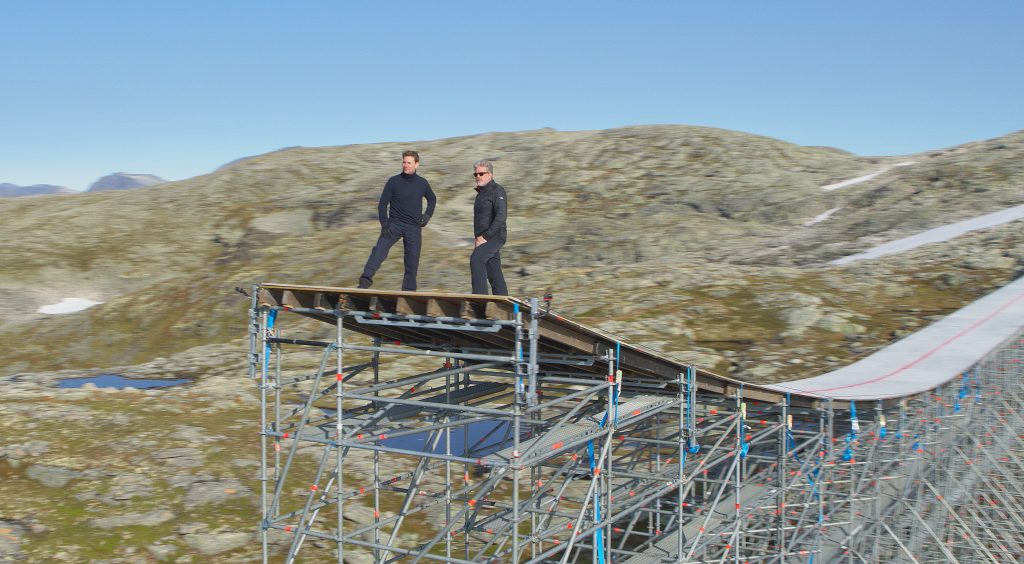
Action in the spotlight
The constant development of LED lighting – and advances made even while the crew were making the film – shaped the end results of Dead Reckoning – Part One. “It’s like when HMI lighting emerged and you were used to tungsten,” says Taggart. “It’s all about playing with it to produce the look and colour temperature you want. LED is also so controllable – it’s a gift and was especially important when we were lighting a party scene in Venice.”
The colour scheme for the distant architecture in the sequence helped “liven up and add colour” to the background in place of the initial more natural moonlight effect they planned. “As the angles used and approach for the party sequence changed, more of the main architectural structure could be seen,” he explains. “So, originally we just wanted a hint of shape, but when the angle was altered by 90 degrees, more of a party atmosphere was needed.”
As cranes could not be used in the space, lights were rigged at the top of a tower in St. Mark’s Square. “We also used the versatile Creamsource Vortex lights and added more blue coming from the rooftop to create a stunning effect,” says Taggart. “And as it is so important to be eco-friendly and the studios must do a report on how much energy you’ve used, LED is great as you don’t burn as much energy.”

Due to the fast pace of the production, adapting quickly is essential. “You can’t say, ‘Oh, I’ve got to climb up there and rig another light,’ which was how we used to have to operate,” says Taggart. “It’s about precise planning of which lights need to be where which my gaffer Martin excels at.”
When deciding how best to shoot the safe house scenes, Taggart did not like the look produced by LED Fresnel lights, so he asked Smith to incorporate a rig of old tungsten ARRI 650s and Source 4s to create a cleaner look they would have more control over. “As we revisited the safe house multiple times as the plot changed, mixing old and new footage, we also used a mixture of Aputure F10 and Fiilex Q5, Q8 and Q10 LED Fresnels,” he says. “Some of the lights were developed during the time we were shooting, have an old tungsten look and are totally controllable in colour temperature and brightness.”
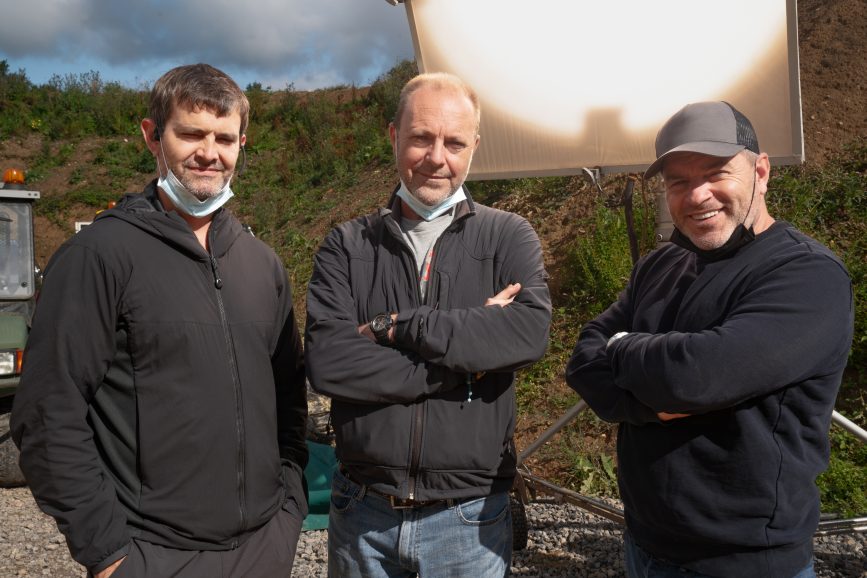
The cinematographer also highlights the importance of the desk operator in achieving their lighting goals and feels fortunate to have found a talented operator in Dan Walters who he has worked with on many productions. “The effects he creates amaze me such as those in the train which were achieved using hard light from Ayrton Ghibli moving light fixtures designed for rock ‘n’ roll concerts to create the effect the train is moving through trees,” he adds.
Restrictions meant the submarine sequences needed to predominantly be lit using practical light. “We enhanced it slightly, but the basic look, for reasons to be revealed in the next film, had to be built into the sub. This required many light fittings and thousands of circuits for the instrument panels, made possible thanks to our genius electricians,” says Taggart. “We had total control over everything, all the practical lights and screens with sonar displays – it was like being on the USS Enterprise!”
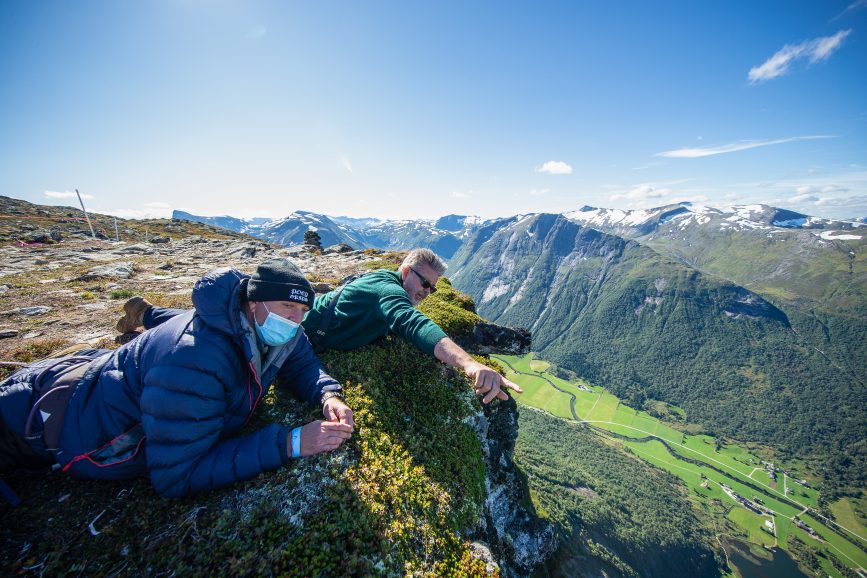
Filmmaking discoveries
A base day and base night LUT were set and tweaked as the shoot progressed, with the LUTs made heavier for sequences such as the desert scenes where more saturation was needed. During the crucial live grade process close collaboration with DIT and on-set colourist from Digital Orchard, Stephan Bookas and DIT Ben Appleton, was at the fore.
“We’d then go into De Lane Lea with Asa Shoul, a colourist I had not worked with before but knew of as he had worked on Fallout and knew the way McQ and Paramount like to operate,” says Taggart. “I’d get the odd days with him, and we’d set a look and feel for each sequence, so the dailies colourist could tune into that, and you can present dailies that are acceptable.”

Taggart then spent 10 days in the final grade with Shoul, fine tuning elements such as reducing the highlights once the film had been condensed to its final running time. “As everything’s real on MI, we tuned the car chase because when shooting in Rome you go from the most extreme low sunlight, which is beautiful but hammering, and then turn to shoot in a dark alleyway. You can’t control the lights once you’re on the move, but you don’t want to cut into the shot, so you make sure when shooting you’re within the range of the cameras. The Z Cams we use have less dynamic range than the Venice’s 14-stop dynamic range and you can’t go to the extremes, but you can tune it into a window where you know in the DI you can blend it to make that hard light acceptable.”
Like many cinematographers, Taggart’s varied and exhilarating career has been a constant learning curve. “Sometimes you put lights and a camera in a situation and something magical happens that is not preconceived. There are lessons throughout your career, but no rulebook dictating how to do it, which keeps the job interesting.

“You’re constantly thrown into situations where you’ve got to make something work. I’ve told film school students who visit our sets, ‘You’ve learned what you can do, now you just have to get out there and do it.’ Making discoveries along the way is what filmmaking is all about.”
While enjoying inspiring and creative discussions with those he worked with on the movie, Taggart is also eager to hear feedback from those who were not part of the production. The first time he saw the film in its entirety he asked the theatre’s projectionist if they felt the movie worked. “He told me he was exhausted in a good way and was looking for a moment to take a breath,” says Taggart. “For me, that was very fulfilling.”

